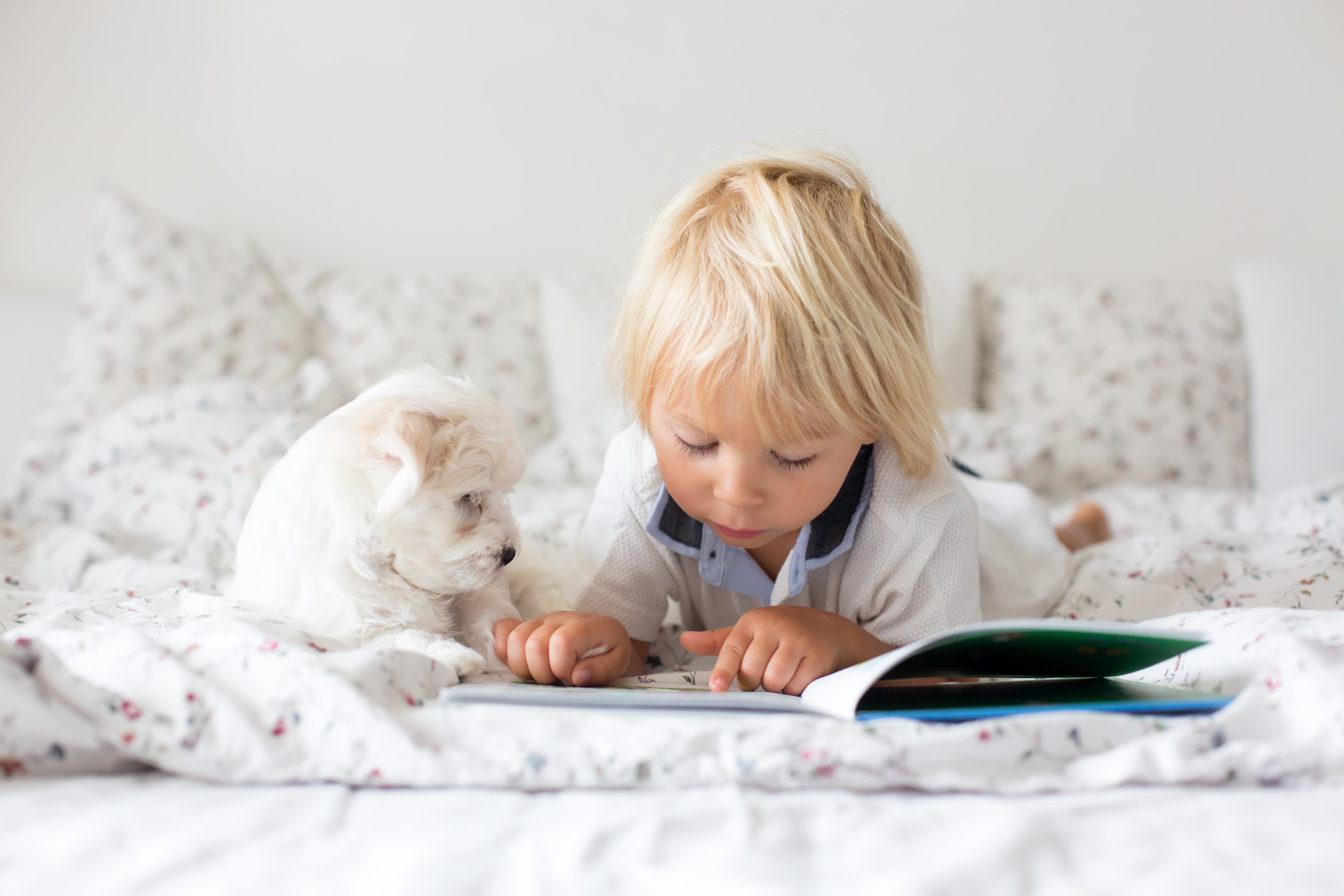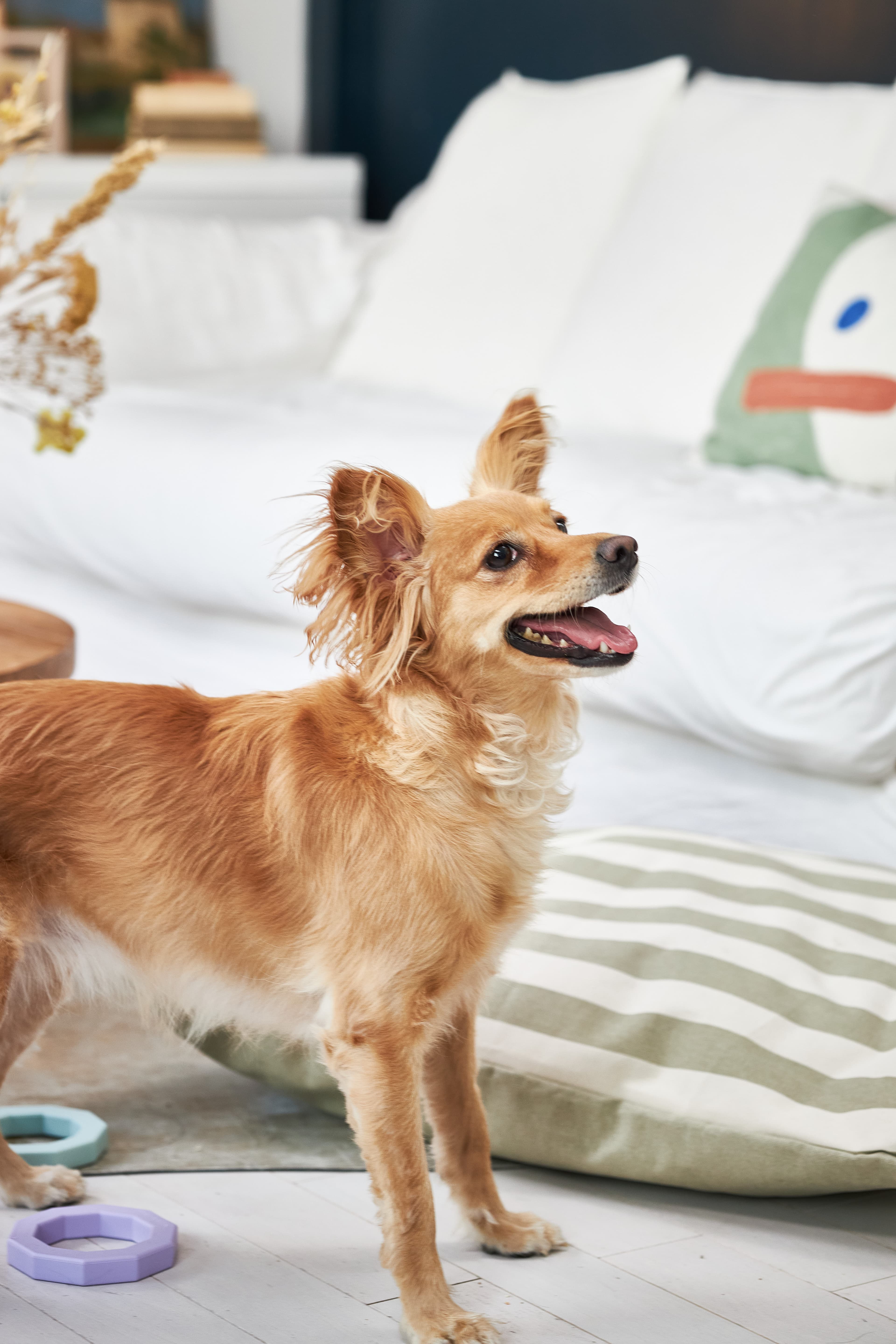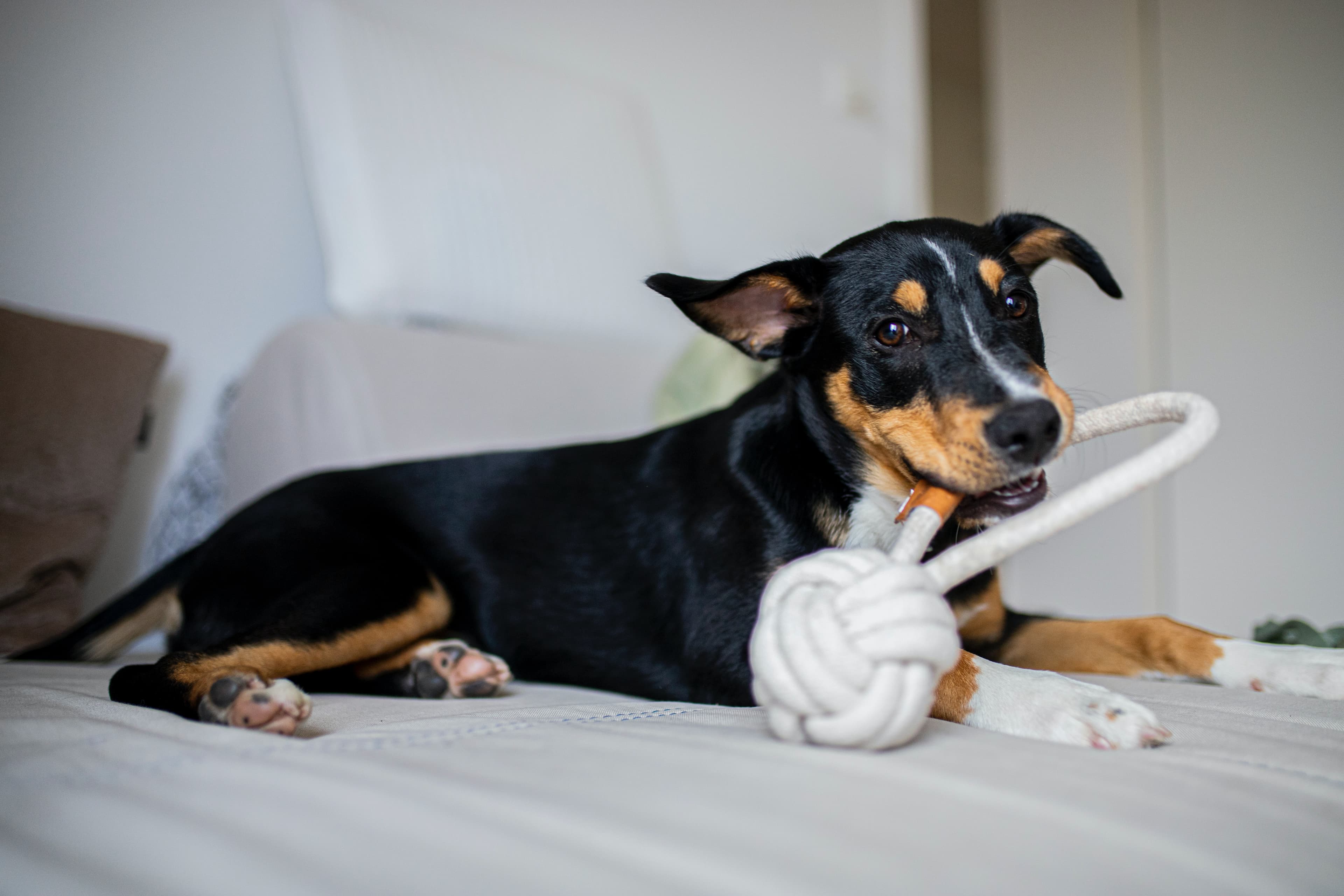How to create a safe relationship between child and dog
The relationship between dog and child can be amazing and they can create a strong bond together. For many, raising a child with a dog is a dream come true, but there are also many risks involved. That's why it's important that you, as adults, always keep a watchful eye on your child and dog. Here we go through everything you need to know to minimise the risks and create a safe upbringing for dog and child.
How to create a safe relationship
There are many risks in letting a dog and a child grow up together as they can both accidentally hurt each other without meaning to. That's why it's very important that you, as the responsible adult, make sure they both learn how to treat each other. This means that the child must learn how dogs work, while you must get the dog used to the child in a respectful way.
The dog's body language
Dogs are individuals and have different sized body zones that they feel comfortable with us humans and children getting inside. Their body zone may also be different for people they know, children and strangers. When the dog becomes uncomfortable in a situation, such as a child being too close, hugging the dog or moving strangely, it will often show small signals to increase its distance. Dogs are experts at communicating with each other from a distance but sometimes we humans are not respectful of these signals. That's why we need to learn the signals so that we can interrupt early if we notice that the dog is uncomfortable.
How to tell when your dog is uncomfortable
Looking away
Turns his whole head away
Turns its whole body away from the child
Becomes stressed, fusses and makes itself small
Puffs
Yawning, licking his mouth
Stiffens up and tightens his lips
Trying to hide
If we don't respect the signals, the dog feels it has to be clearer. Below you can see a typical situation where the dog wants to increase its distance. Not listening to early signals can lead to the dog chasing or biting the child.
Averting eyes, head and body
Stiffens and tightens its muzzle
Growls
Showing teeth
Bites the air
Bites
Some dog breeds and individuals are less likely to growl, bite or hack. They may show discomfort by, for example, walking away, flailing around and making themselves small. Respect these dogs too and get to know your dog's body language to prevent damaging the relationship between the child and the dog over time.
What to do if your dog shows these signals
As soon as you see your dog showing any of the uncomfortable signals, remove the child from the situation and ask the child to turn his or her back to the dog. Think about what the situation looked like so you can prevent the same situation from happening again. This way you are being respectful to the dog, it doesn't have to show clearer signals and it feels that you are in control.
Give your child the tools to learn the dog's signals
Your child is well placed to understand the dog's signals and how to behave around animals. It can also lead to a better capacity for empathy in your child. Empathy can be strengthened towards animals as well as other people.
Research has shown good results from children interacting with animals and having pets while growing up. Children's social and emotional skills become stronger but it also requires you as an adult to be there to guide step by step. You as an adult are a protective and safe link between the child and the dog. Therefore, start from your child's age and adapt your approach accordingly.
Small children and babies
When your child pets the dog, you should always be present
Show how to pet your dog
You can also help your child to pet gently with your hand
Learning for young children is reinforced with lots of positive reinforcement and encouragement when your child handles the dog well
For the sake of the dog and the child, you should always be there to rein him in if your child misbehaves with the dog. For example, by running after it, pulling its fur or trying to get closer to the dog when it clearly shows that it wants distance (as per the signals above)
If you have an adult dog when you have your baby, it's important to let the dog explore the new family member at its own pace. Most dogs are gentle with babies and small children and you can build a good relationship from the start.
Older children
For older pre-school children, the first step is to explain why we don't, for example, pull the dog's fur, chase the dog or hit the dog, and tell them what the consequences might be if they don't listen to the dog. Children at this age can start to reason.
Be with your child and start interpreting the dog's signals together. Explain to the child when the dog is showing signals like getting distance and learn about the dog's body language together.
Then give the child the tools to think about why the dog shows certain signals in different situations. You can ask questions such as Why do you think the dog is growling/turning away now? and How would you feel if you wanted to be left alone and I came to kill you? to show the child that this is the dog's way of communicating. Then the child will learn that it cannot continue to misbehave towards the dog and you can explore together the dog's experience of the situation.
Children and dogs can have absolutely wonderful, long relationships that are almost unlike any other, but it takes work. Remember, as a parent, you have the ultimate responsibility and act as the "interpreter" or link between these two little creatures who are learning what it means to communicate and feel. Set a good example and do it again, and again, and again," says Ida Svensson, child psychologist at Knodd.
If there is an accident
Despite being careful and trying to avoid misunderstandings, an accident can happen. If your child has been bitten by a dog and the skin is broken, it is important to seek medical attention immediately. A bite from a dog or other pet such as a cat can, within a few hours, cause infection.
Here's what to do if your child is bitten through the skin:
Clean the wound thoroughly with water and mild soap. Then seek immediate medical attention. They can then start a course of antibiotics.
If your child does not have a tetanus vaccine, you should go straight to a paediatric clinic for treatment. Children over one year old usually have a tetanus vaccine as part of the general vaccination programme, but check that your child is protected.
If the bite does not penetrate the skin, wash with soap and water and then keep an eye on the scratch to make sure there is no infection.
Give it time and patience
To create the lifelong relationship you're looking for, remember that learning takes time, both for the child and the dog. They won't have time to get to know each other after just one training session. Take it one day at a time, pay attention when your child makes good decisions and remind them of what you talked about earlier. Set a good example and show how to behave to make both child and dog feel good and prevent the risk of accidents. Over time, your child will get better at respecting the dog's body language and the two future best friends will have many exciting, and safe, experiences together.






